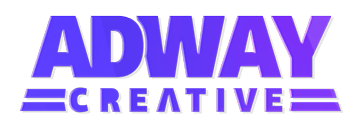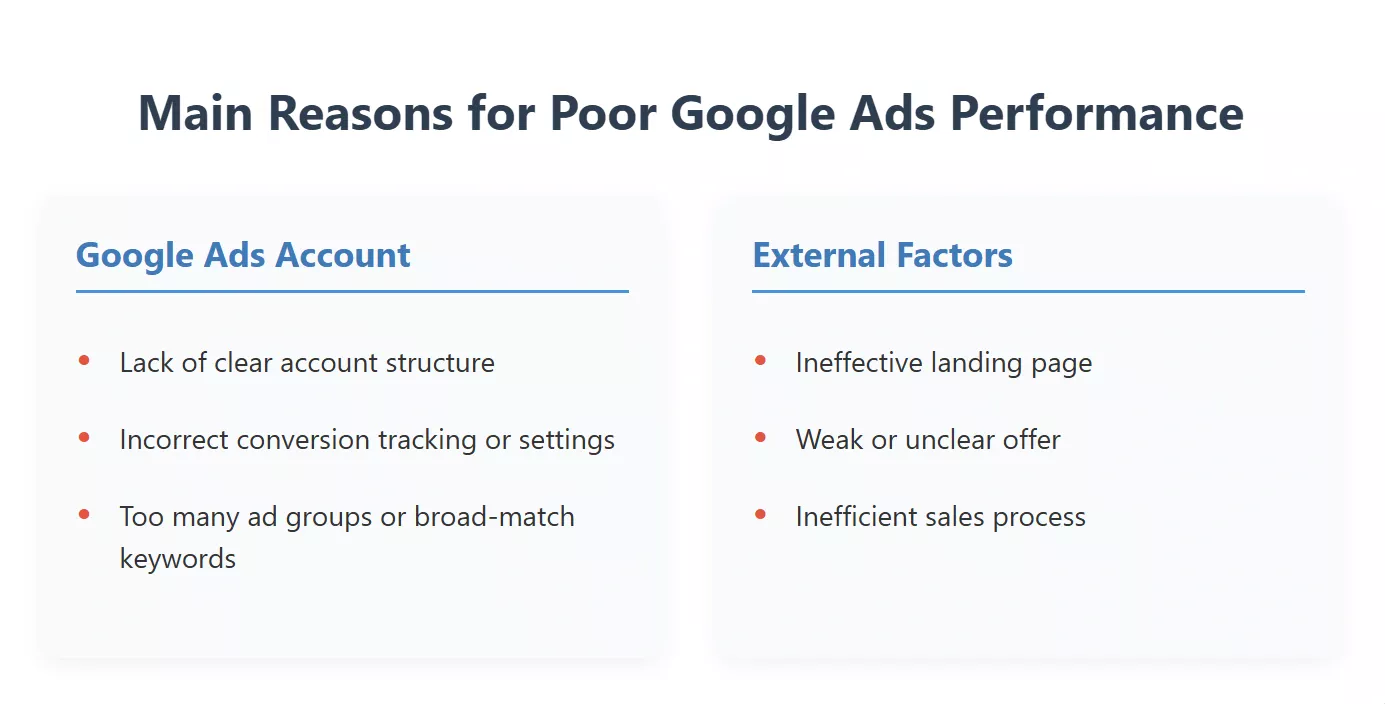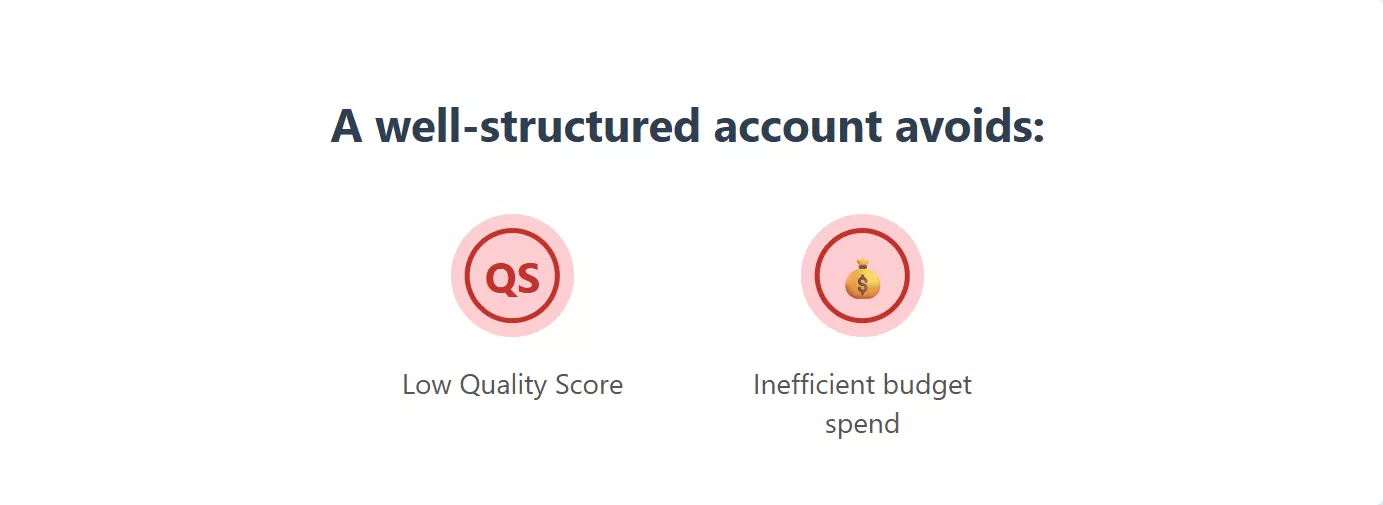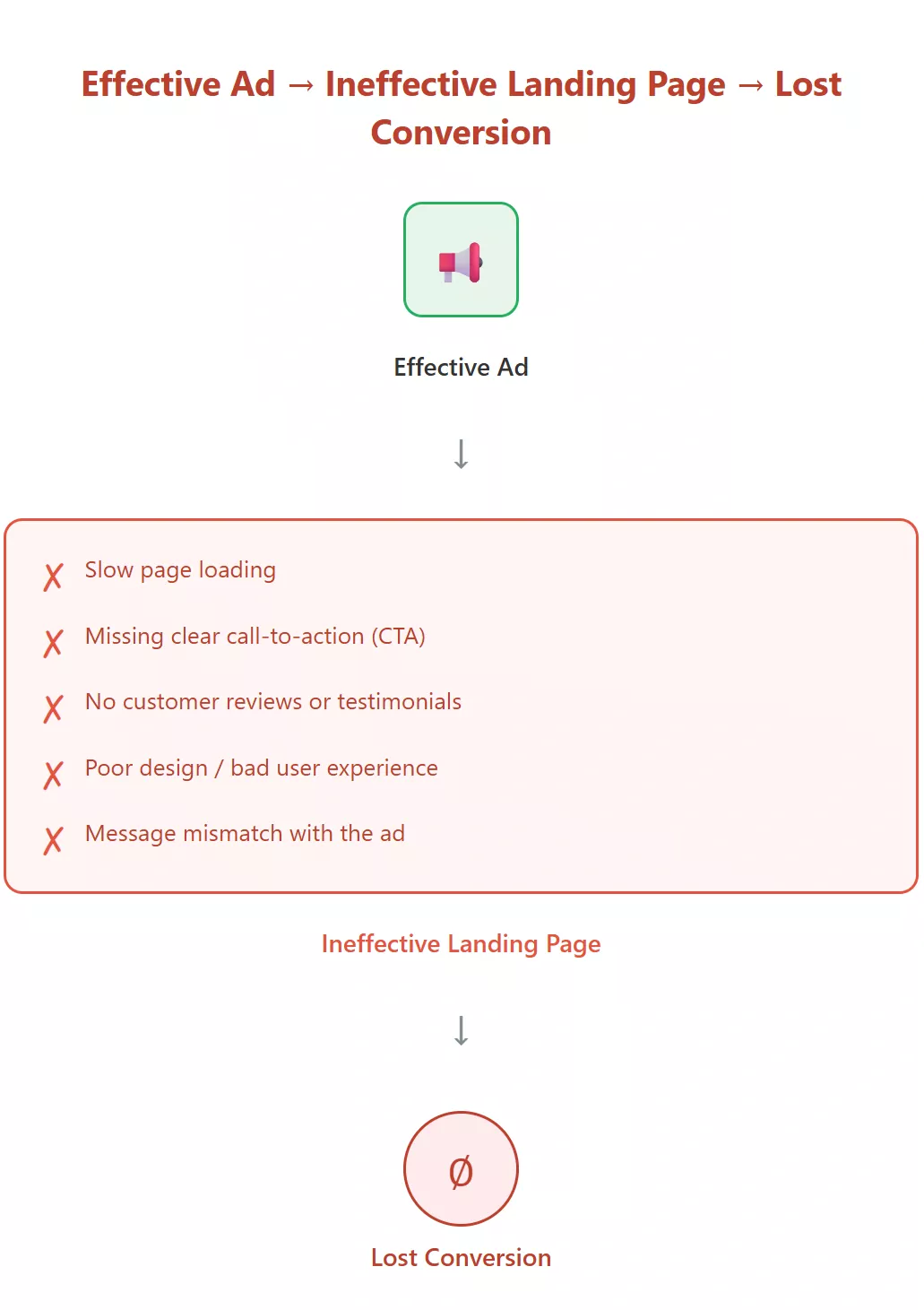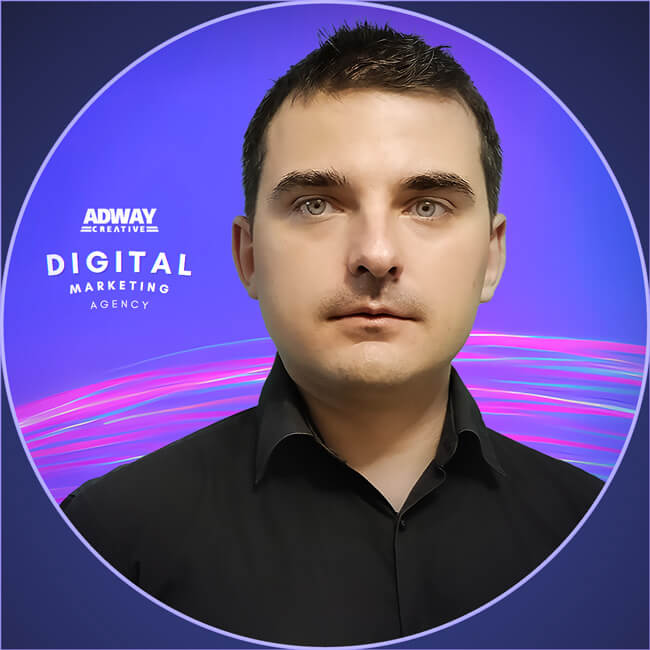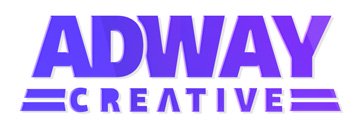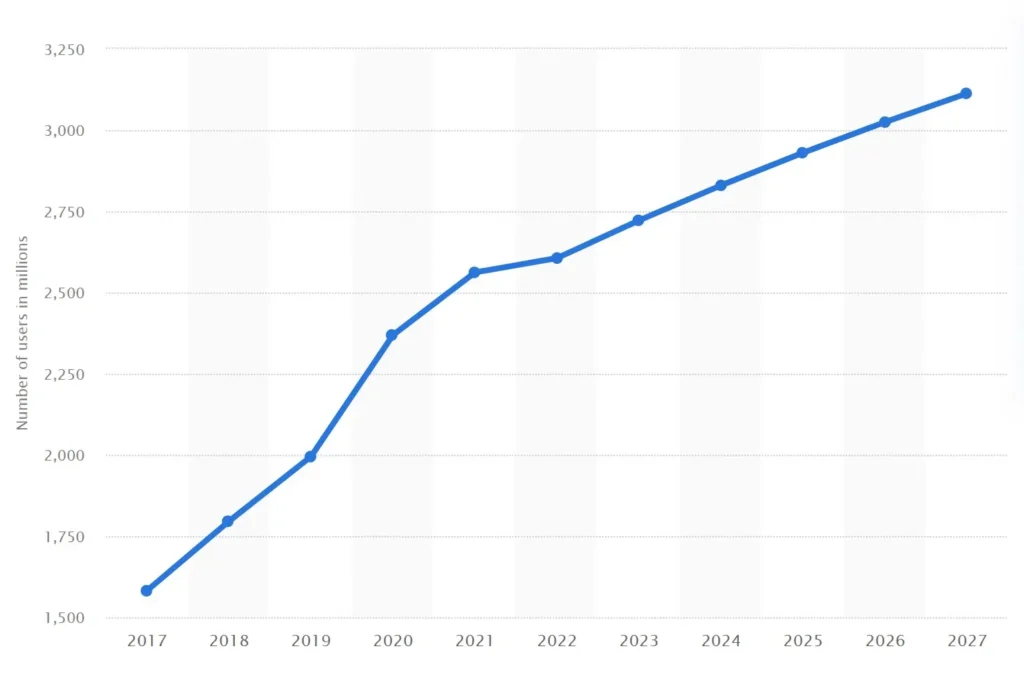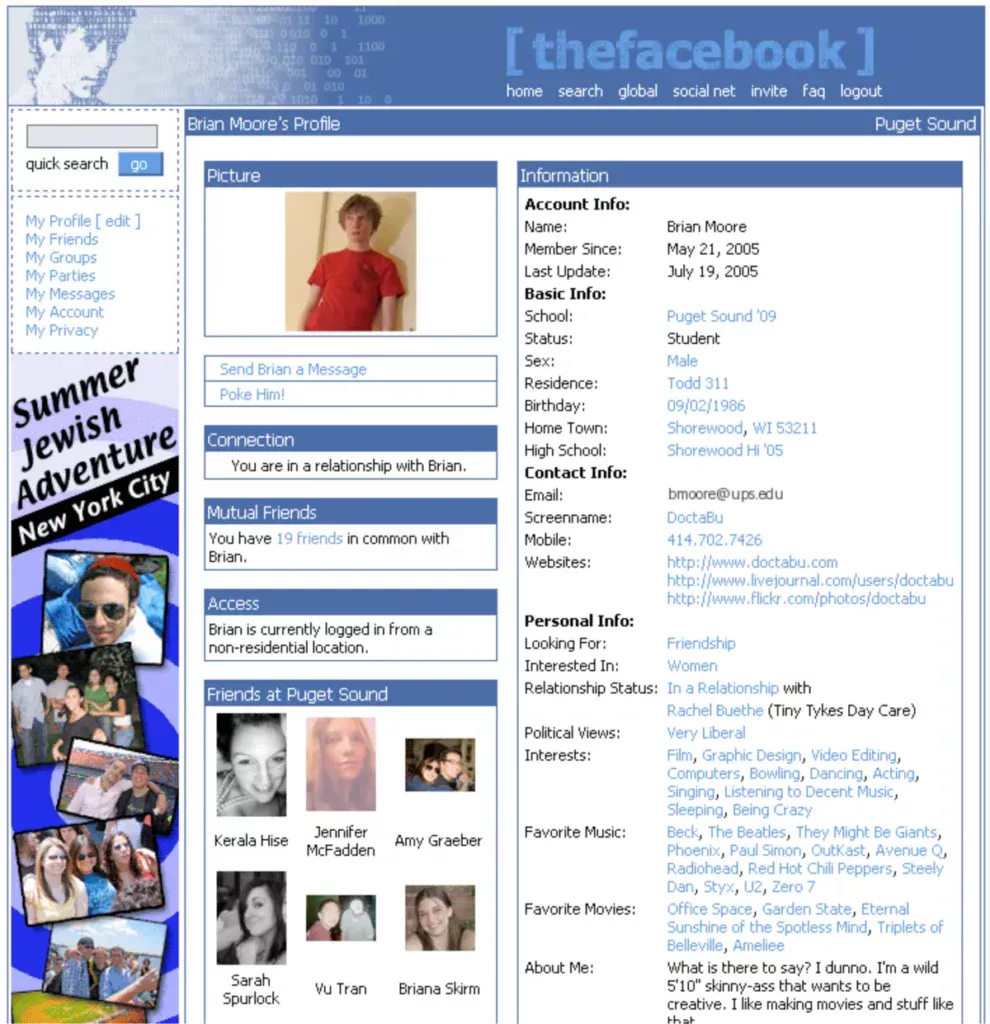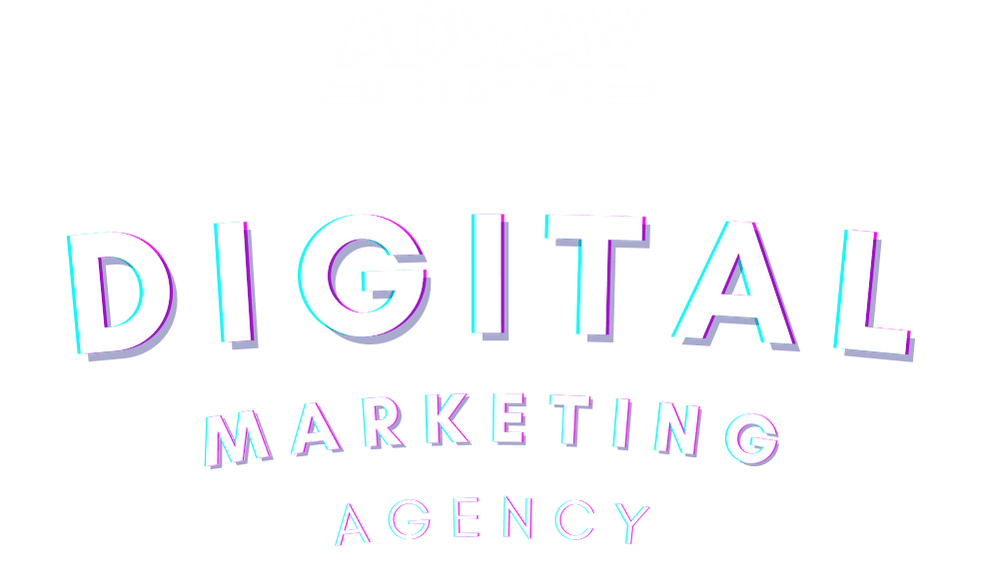
Why aren't your Google Ads generating conversions? 6 reasons and solutions.
Unlock Your Competitive Edge
Table of Contents
You invest in Google Ads, you see clicks, traffic to your site increases, but no real sales or inquiries. This is a common and frustrating problem that makes many businesses question the effectiveness of the platform. The truth is that a lack of Google Ads conversions is rarely due to a single cause. It’s usually a combination of factors that we can divide into two main groups:
- issues within the Google Ads account itself and
- external issues related to your website, offer and sales process.

In this article, updated for trends in 2025, we will look at the six main “culprits” for the lack of results. We’ll show you how to diagnose each one and give you practical advice and solutions based on our over 17 years of experience managing successful campaigns.
Part 1: Problems within your Google Ads account
The first step is to look “under the hood” of your ad account. This is often where fundamental mistakes are hidden that sabotage even the best-conceived strategy.
1. Lack of clear account structure.
The root of failure Imagine building a house without an architectural plan. The result would be chaotic and unstable. The same goes for your Google Ads account. A bad structure leads to inefficient spending of the budget, low Quality Score and confusing Google’s AI algorithms, which cannot optimize your campaigns properly.
Common problems are too many campaigns without a clear goal, where different ad groups compete with each other for the same keywords (“cannibalization”). This not only increases the cost per click (CPC), but also prevents the collection of enough data for effective optimization.
Case study: Restructuring for 120% increase in conversions
We encountered this problem with a client in the B2B sector who was offering software solutions. His account was a chaotic jumble of 15 campaigns, each with dozens of ad groups targeting similar keywords.
> Before: The budget was wasted, and the cost per conversion (CPA) was over 127.82 EUR.
> After: We consolidated the account into 4 strategic campaigns, divided by product type and stage of the consumer funnel (awareness, consideration, conversion). The result after 3 months was a 120% increase in Google Ads conversions with a 45% drop in CPA. This example proves that a good structure is not just a recommendation, but a foundation for success.
> Pro Tip: Start with a simple and logical structure. Segment your campaigns by product categories, services, geographic locations or even by profit margins. This will give you much better control and clarity on performance.
2. Incorrect data or conversion settings
This is perhaps the most critical and often overlooked reason.
If you’re not measuring conversions correctly, you’re literally telling Google to optimize for the wrong goals. Modern Google Ads bidding strategies, such as Target CPA and Maximize Conversions, are completely dependent on the data you feed them. If the data is wrong, the results will be disastrous.
Common setup errors:
For Lead Gen businesses:
- Using “Every” setting instead of “One” to measure filled shapes. This means that if a user fills out the form 5 times, you will count 5 conversions instead of 1 unique lead. This artificially inflates the results and misleads the algorithm.
- When tracking calls: Count each call as a conversion without setting a minimum duration (eg 60 seconds). This is how you pay for wrong numbers and short, low-quality calls.
For E-commerce:
- Counting micro-conversions (like “add to cart”) with the same weight as a macro-conversion (purchase). This “makes” the AI optimize for actions that do not bring direct revenue.
3. Wrong keyword and ad group strategy
Keyword selection is the heart of Search campaigns.
In 2025, the trend is clear: the focus is shifting from huge lists of keywords to more consolidated ad groups that target user intent rather than just specific words.
The Danger of Broad Match: Excessive and uncontrolled use of Broad Match keywords is a surefire way to blow your budget on irrelevant traffic. While Google encourages its use in combination with Smart Bidding, this requires very careful monitoring and a rich list of negative keywords. In one of our projects, a client had enabled Broad Match without negative keywords, resulting in 70% of their budget being spent on searches that had nothing to do with their business.
Tip for 2026: Consolidate! Instead of creating dozens of ad groups with 1-2 keywords each (the old SKAG structure), group semantically related keywords into one ad group. This gives the AI more data to optimize faster and more efficiently.
Part 2: Issues outside of your Google Ads account
Even if you have a perfectly set up account, if the user ends up on a bad website or your offer is not attractive, there will be no conversion. This is where the principles of E-E-A-T (Experience, Expertise, Authoritativeness, Trustworthiness) come into play, which, although an SEO concept, are fundamental to building trust and persuading the user to act.
4. Ineffective landing page (Landing Page): Advertising attracts, but the site repels
Problems that kill conversions:
- Technically: Slow loading, poor mobile experience (over 60% of traffic), broken buttons or forms.
- Inconsistency in message: The ad promises “50% off”, but there is none on the page. This is the fastest way to lose the user’s trust.
- Lack of E-E-A-T elements (Trustworthiness): Absence of customer reviews, certificates, awards, clear terms, contacts or guarantees. Consumers are looking for proof that they can trust you, especially if they are seeing you for the first time.
Effective landing page optimization is a must. Make sure your page lives up to the promise of the ad, has a clear call-to-action and contains elements that build trust.
5. Weak or unclear offer: More than just price
Often, businesses focus too much on the technical aspects of Google Ads and forget the most important thing: what are they actually offering the customer?
Your proposition (offer) is the totality of the product/service, price, bonuses, guarantees and emotional value you provide.
If your competitors offer the same but with free shipping, a longer warranty or better support, your perfect ad campaign is pointless. You must answer the question: “Why should the customer choose me and not someone else?“
> Personal experience: Bid change that tripled conversions
We had a client – an online cosmetics store, whose ads had a high CTR, but a very low conversion rate. Instead of changing prices, we analyzed the competition and reformulated the offer. We added “Free consultation with a beautician for orders over EUR 25.” and “30-Day Money Back Guarantee.” This change, which we communicated clearly in ads and on the site, tripled the conversion rate in less than a month without changing the price of the products.
This shows the power of a well thought out offer.
6. Ineffective Sales Process: The Broken Connection
This problem is especially true for businesses that generate leads (inquiries). A Google Ads campaign can be successful and bring dozens of inquiries per day. But if your sales team isn’t connecting with them quickly, isn’t prepared, or the process is cumbersome, those leads will never convert into customers.
Studies show that the chance of contacting a lead decreases 10 times if you wait more than 5 minutes.
Analyze your entire process:
- How quickly do you respond to inquiries?
- What is the conversation script?
- What are the follow-up steps?
- Do you measure how many of the leads you generate actually convert into sales?
CRM system integration and offline conversion tracking are key to the full picture. This will allow you to optimize your campaigns not just to generate leads, but to generate quality leads that lead to real sales.
Conclusion: How to turn Google Ads into a profitable channel?
The lack of Google Ads conversions is a complex problem, but its solution is completely achievable through a systematic approach.
Start by auditing your account – check your structure, conversion settings and keyword strategy. Then broaden your horizons and critically analyze your landing page, the strength of your offer, and the effectiveness of your sales process. Be sure to integrate the principles of E-E-A-T to build trust and convince consumers to choose you.
If you’re feeling overwhelmed or just want an expert opinion, the AdwayCreative team is here to help. With over 17 years of experience and hundreds of successful campaigns, we can do a full audit of your Google Ads activities and create a strategy that brings real, measurable results.
Contact us today for a free audit of your Google Ads account and let’s turn clicks into customers together! You can write to us at talk@adwaycreative.com or connect with us through our professional profiles on LinkedIn.
FAQ - frequently asked questions and answers
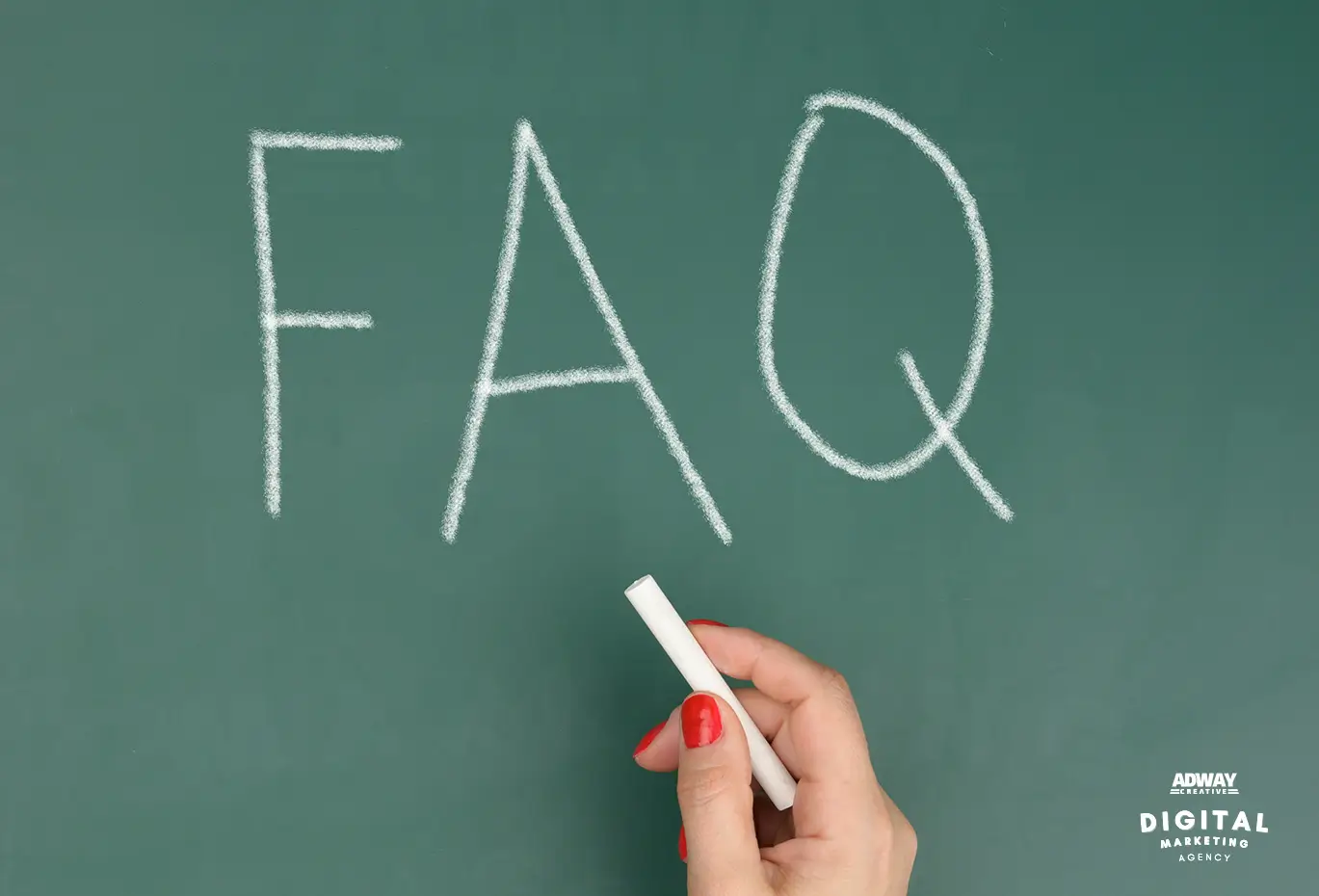
Why am I getting clicks but no conversions?
This is the classic problem we’ve looked at. The reasons could be many: irrelevant traffic (wrong keywords), poor user experience on the landing page, non-competitive offer, technical problems with conversion tracking or simply a non-working order button. Start diagnostics from point 1 in this article.
Should I lower my prices if my ads aren’t converting?
Don’t rush. Price reduction is only one tool, and often not the most effective. Before that, analyze whether you can improve the perceived value of your offer – add bonuses, a better guarantee, free shipping, expert advice. As our case study showed, this often has a greater effect than the price discount.
What is a good conversion rate in Google Ads?
The average conversion rate varies widely across industries, with the latest data for 2025 hovering around 7.52%. For E-commerce, a good rate is around 2-3%, while for Lead Generation it can reach 5-10% and more. It is important not to compare yourself to general averages, but to strive for continuous improvement of your own results.
- About the Author
- Latest Posts
- Client Results
With over fifteen years of hands-on experience in PPC, SEO, content marketing, and social media, Iliya Avramov has honed his expertise through strategic collaborations with global teams, mastering the art of blending traditional marketing strategies with cutting-edge digital services and technologies. His deep understanding of digital trends—backed by a proven track record of scaling campaigns for startups, B2B enterprises, and e-commerce brands—ensures businesses achieve sustainable growth, with measurable ROI increases of up to 540% in competitive online landscapes.
Iliya specializes in data-driven strategies, including advanced PPC optimization (e.g., Google Ads and Meta campaigns), technical SEO audits, content creation that drives organic traffic, and social media engagement that boosts brand loyalty. He has successfully managed marketing budgets from $1,000 to over $100,000 monthly, generating thousands of leads and conversions across industries like agriculture, health, and retail. Proficient in tools such as Google Analytics, SEMrush, Ahrefs, and AI-powered analytics, Iliya’s innovative approaches are supported by insights from leading resources like Google Search Central for SEO updates and Think with Google for data-driven marketing, ensuring alignment with the latest best practices.
His leadership has earned AdwayCreative numerous industry recognitions, including:
- 2020: Mastery in 3D visualizations and graphic design (Acquisition International).
- 2021: Media Innovator Award (Corporate Vision).
- 2022: Martech Award (Corporate Vision).
- 2022: Global Finance Award (Global Banking & Finance).
- 2023: Global Finance Award (Global Banking & Finance).
- 2023: Best Full Service Marketing and Advertising Agency (Innovation in Business).
- 2024: Bulgaria’s Most Reviewed Social Media Marketing Agency (The Manifest/Clutch).
- 2025: Advertising & Marketing Customer Satisfaction & Happiness Award (Global Banking & Finance).
Author Disclosure: Iliya Avramov is the founder of AdwayCreative and may reference agency services in his content. All opinions and strategies are grounded in over a decade of professional experience and independent industry research, with no undisclosed affiliations.
Publication Date: July 22, 2025 | Last Updated: July 22, 2025
- Why aren't your Google Ads generating conversions? 6 reasons and solutions.
- Google Ads Services: Drive Immediate Results with Expert PPC Management
- Google's Loyalty Program Update: How to Stand Out in Search | AdwayCreative
- Maximizing Google Ads ROI: The Power of MaxDiff and Conjoint Analysis
- Why Choose a Google Ads Management & Marketing Advertising Agency in 2025
- How Much Does Google Ads Cost? [EU Insights + Case Studies]
See Real Results from AdwayCreative Clients
Curious what digital marketing can achieve for your business? Explore highlights from some of our recent success stories:
-
ROSELA | LEADING CUCUMBER PRODUCER GOES DIGITAL 🌱
Digital transformation brought 5,500+ new users, 1,808% boost in visibility, and 71% lower ad costs.
See more -
DA.CARE | SWISS STARTUP 👶
Swiss startup built a trusted UK brand with AI insights, 420+ subscribers in a month, and high-converting campaigns.
See more -
PARK&FLY ✈️
From zero to 100,000+ users and 40% repeat customers through integrated strategies.
See more -
ART:E 🎨
Over 500 new accounts activated, 12,000+ daily users, and reduced churn for an artisan platform.
See more -
MALEEVI TENNIS CLUB 🎾
220+ leads and 90% engagement growth in just 46 days.
See more -
MIRIAM SWIMWEAR 🩱
613+ new affiliate signups and acquisition costs as low as $0.32 per lead.
See more
See the full list of AdwayCreative case studies here →
